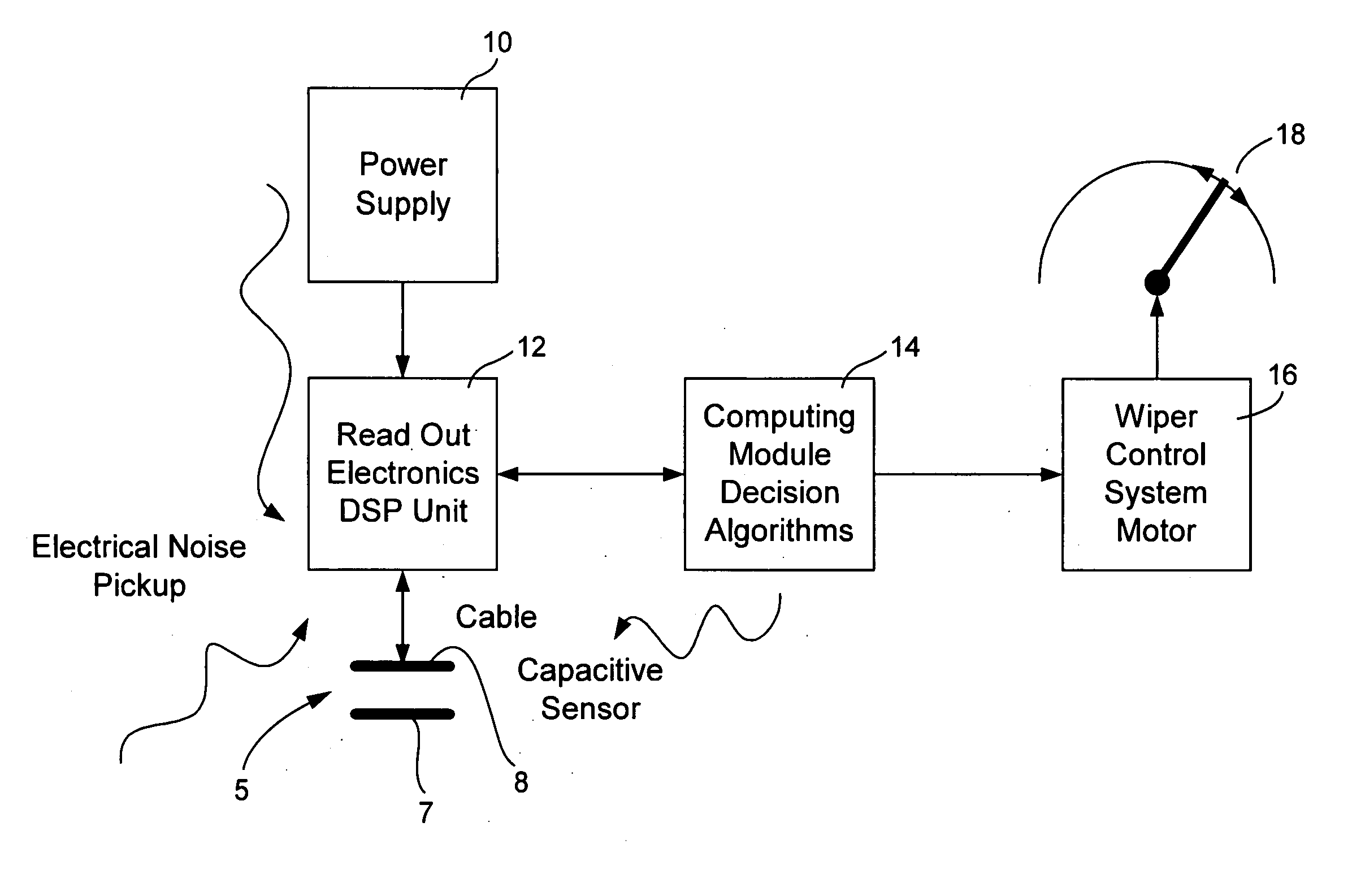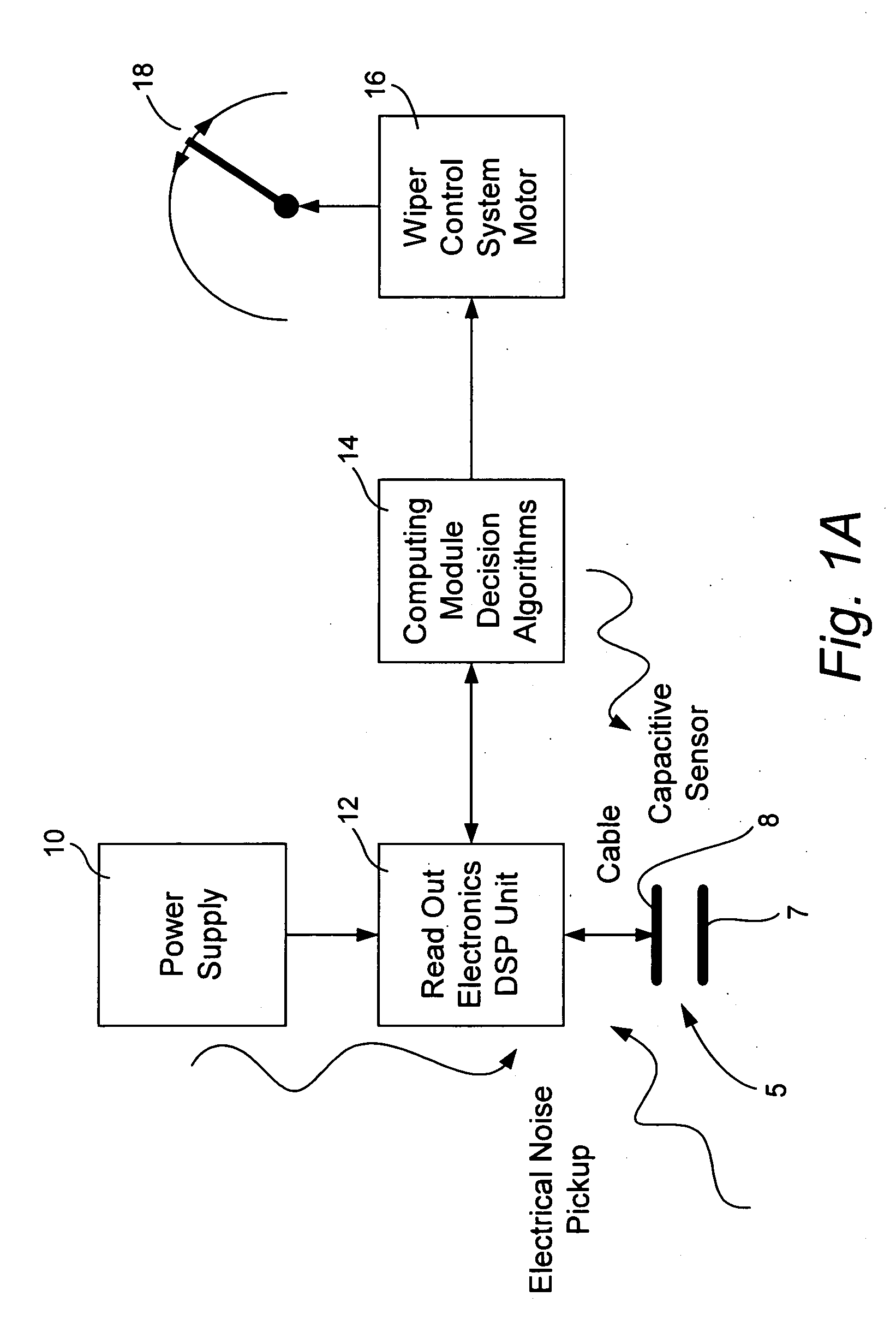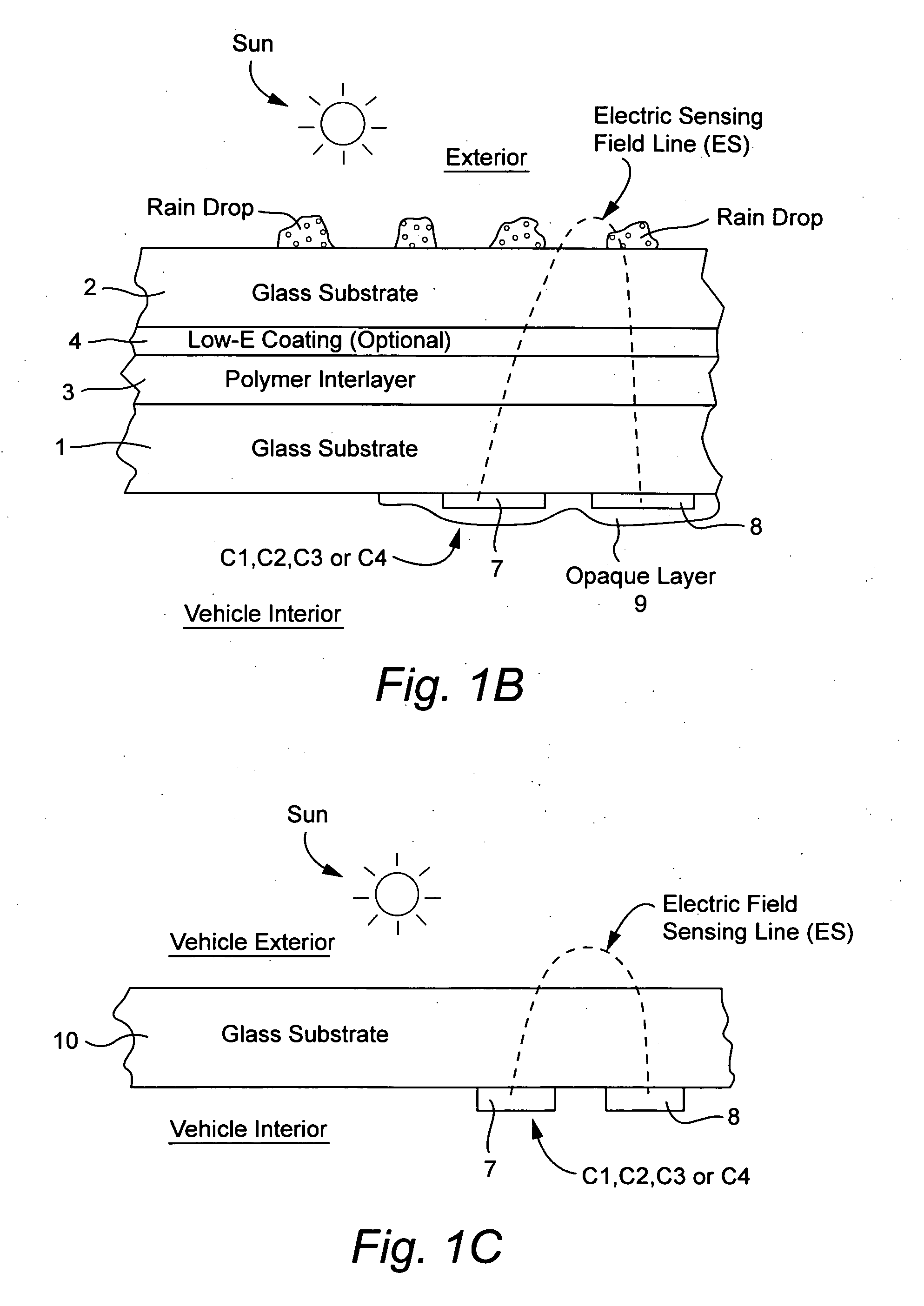Rain sensor for detecting rain or other material on window of a vehicle or on other surface
a technology for rain or other materials and rain sensors, which is applied in the direction of motor/generator/converter stoppers, emergency protective circuit arrangements, process and machine control, etc. it can solve the problems of false reading/wipes, dangerous driving conditions for drivers, passengers, pedestrians, etc., and reduce the danger of driving. , the effect of reducing the distraction of the driver
- Summary
- Abstract
- Description
- Claims
- Application Information
AI Technical Summary
Benefits of technology
Problems solved by technology
Method used
Image
Examples
Embodiment Construction
[0064] Referring now more particularly to the accompanying drawings in which like reference numerals indicate like parts throughout the several views.
[0065] In certain example embodiments of this invention, a moisture (e.g., rain) sensor system and / or method is provided and includes capacitance-based detection which translates a physical input signal (e.g., the presence of a drop of water on a windshield, or the like) into a digital electrical voltage signal which is received and interpreted by a software program(s) or circuit(s) that decides whether windshield wipers should be activated, and, if so, optionally their proper speed. Thus, capacitive coupling is used to detect water and / or other material in the exterior surface of a window such as a vehicle windshield, sunroof, and / or backlite. It will be appreciated that computational methods may be performed by hardware or a combination of hardware and software in different example embodiments of this invention. In certain example e...
PUM
| Property | Measurement | Unit |
|---|---|---|
| meandering length | aaaaa | aaaaa |
| meandering length | aaaaa | aaaaa |
| meandering length | aaaaa | aaaaa |
Abstract
Description
Claims
Application Information
 Login to View More
Login to View More - R&D
- Intellectual Property
- Life Sciences
- Materials
- Tech Scout
- Unparalleled Data Quality
- Higher Quality Content
- 60% Fewer Hallucinations
Browse by: Latest US Patents, China's latest patents, Technical Efficacy Thesaurus, Application Domain, Technology Topic, Popular Technical Reports.
© 2025 PatSnap. All rights reserved.Legal|Privacy policy|Modern Slavery Act Transparency Statement|Sitemap|About US| Contact US: help@patsnap.com



